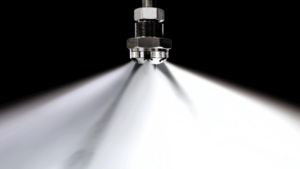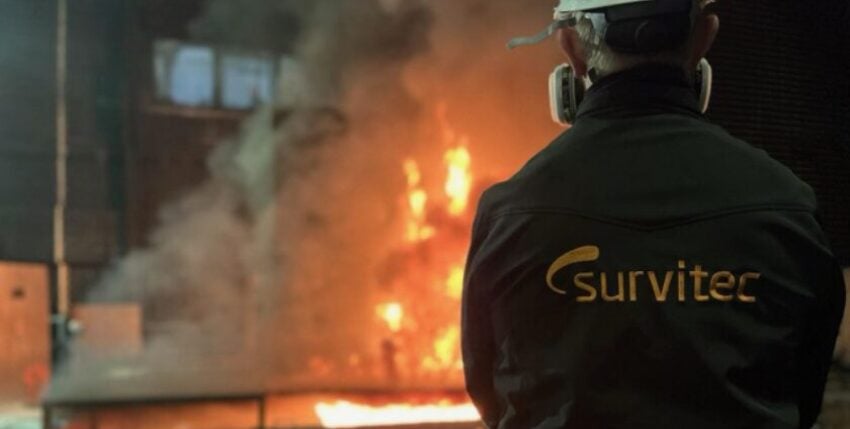According to a new fire safety study, current fire extinguishing systems are inadequate for fighting engine room fires involving methanol-based engines.
Engine fires
In light of the growing interest in methanol as an alternative marine fuel, the study conducted by the British company SURVITEC, a global provider of survival technologies, carried out extensive and comparative fire tests on marine engines fuelled with both diesel oil and methanol. The tests confirmed that conventional water mist firefighting systems do not provide the expected extinguishing performance on methanol fires. If conventionally fuelled ships are to remain safe, a new approach is needed, according to the product manager for water mist systems at Survitec.
Bilge fires
The tests also showed that standard extinguishing systems and equipment are also unable to extinguish methanol fires properly in the confined and compartmentalised bilge spaces. It is therefore of crucial importance that the permanently installed foam fire extinguishing systems used utilise an alcohol-resistant foam concentrate and that the foam is extinguished correctly and extensively in the confined spaces where the throw range is limited.
Hazard
Methanol is a methyl alcohol that burns differently to hydrocarbon fuels and has a very low flash point of just 11 °C. While there are established fire safety regulations and test standards for diesel fuels (flash point of 56 °C), test protocols have yet to be developed for alcohol-based fuels such as methanol and ethanol. As methanol has different physico-chemical properties and methanol vapours form explosive mixtures with air, methanol fires cannot be extinguished as easily or safely with current firefighting systems.

New concept
While water mist systems are very effective at absorbing heat and displacing oxygen in diesel fires, the same test results could not be achieved with methanol fires. The placement of the nozzles, their distances from each other and other factors were analysed in extensive studies in order to make water mist suppression more effective for methanol fires. For example, the height of the nozzle installation above the engine must be much lower than that required to extinguish a diesel fire.
Realisation
The study comes at the right time, as orders for methanol-fuelled marine engines are increasing. The more environmentally friendly fuel is seen as a "panacea" for achieving emission reduction targets in the shipping industry. Analysts assume that the methanol-powered fleet could account for around 20 million GT by 2028 (gross registered tonnage or gross tonnage (GT): spatial measure for the size of merchant ships: 1 GT = 100 cubic feet ≈ 2.83 cubic metres). However, conventionally equipped ships that are (or are to be) retrofitted for operation with methanol must completely redesign their permanently installed fire extinguishing equipment.

IMO
As a fuel with a low flashpoint, methanol is part of the IGF Code (International Code of Safety for Ships using Gases or other Low-flashpoint Fuels). However, this code does not yet contain any detailed requirements for its use. In order to provide shipping administrations, port authorities, ship owners and the industry as a whole with guidelines for the safe use of hydrogen and ammonia as fuel, the International Maritime Organisation (IMO) published an initial provisional guideline in 2020. It is updated every year and contains provisions for the arrangement, installation, control and monitoring of machinery, equipment and systems that use methanol and ethanol as fuel. However, the interim directive is still very general in many respects. In addition, the methanol conformity of LAFF (Local Application Firefighting) systems is not yet regulated. LAFF is a water mist fire extinguishing system that can be used immediately in the event of a fire without having to evacuate the room first.
The challenge
In view of the urgency and the steadily increasing number of newly built or retrofitted methanol-powered ships, politicians must now act in concert with the entire shipping industry and establish clear norms and standards. New test protocols and safety regulations are needed for the risks arising from the operation of methanol and to avoid dangerous fire protection gaps; in this respect, the engine manufacturers also have a duty here.
Background
The IMO, with its Sub-Committee on the Carriage of Goods and Containers, plays an important role in the development of technical regulations and ensures that safety aspects and potential risks associated with the use of alternative fuels and related technologies are adequately addressed.
The guidelines already developed include
Provisional guidelines for the safety of ships using methyl/ethyl alcohol as fuel (MSC.1/Circ.1621);
Interim guidelines for ships using fuel cells (MSC.1/ Circ.1647); and
Provisional guidelines for the safety of ships using LPG fuels (MSC.1/Circ.1666).
The current work plan envisages the further development of the guidelines in 2024/2025 with the finalisation of the binding provisions for methyl/ethyl alcohols by 2026.
Sources: SWZ Maritime, IMO, kdk










